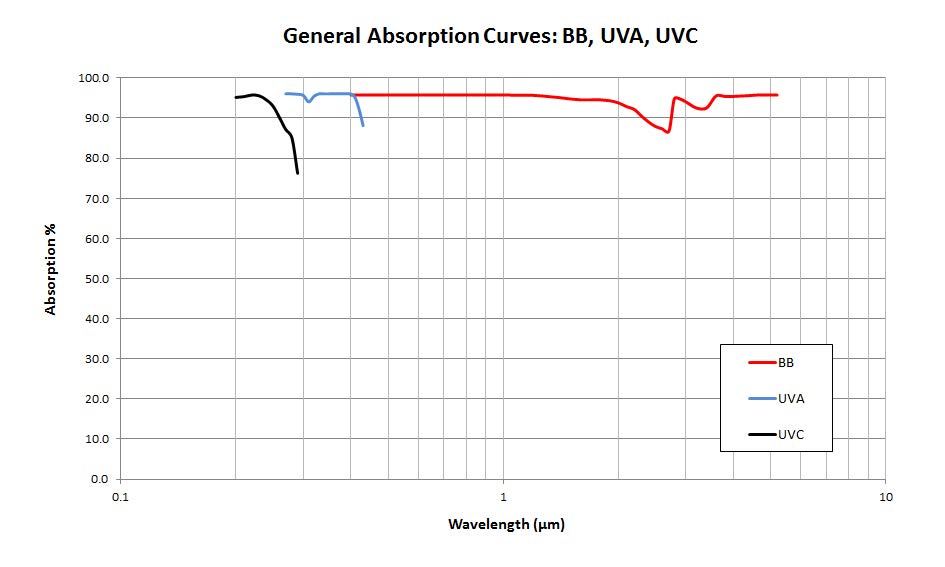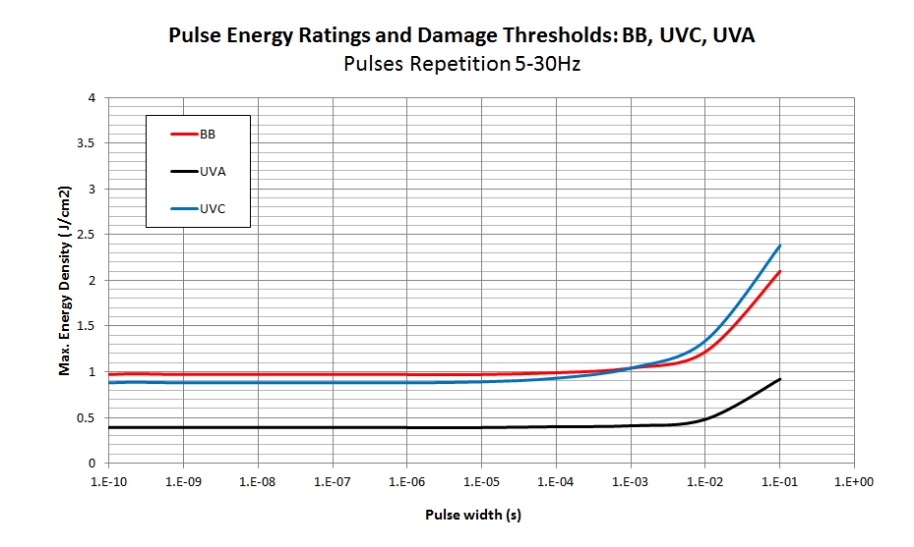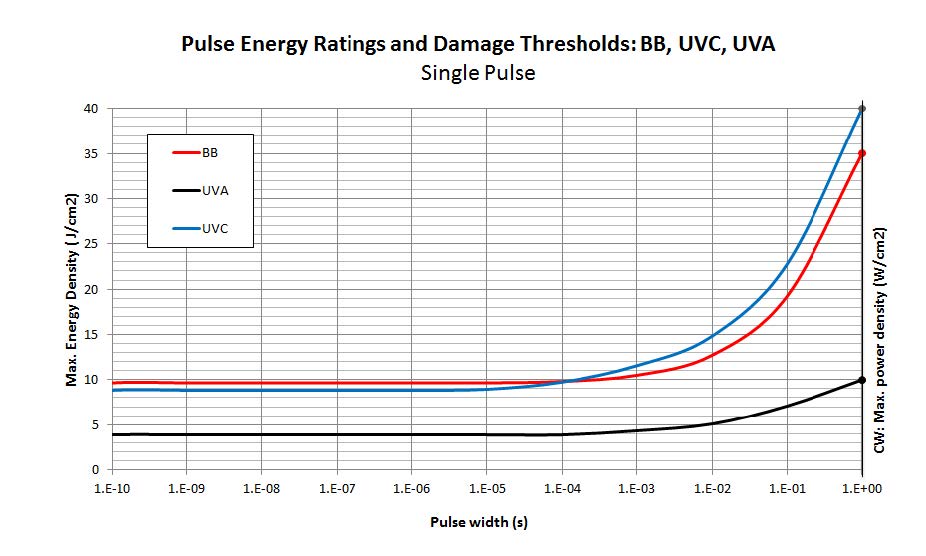Volume Absorbers
In lasers that deliver short time pulses ( lower than microseconds), the time needed by heat to flow away from the impact area and to be removed by the cooling system is longer than the duration of the pulse length. An excess of heat remains concentrated within a thin layer on the sensor’s surface where it generates a sudden overheating of the absorbing material. Above a certain level, this excess of energy can cause damages; often it will cause the absorber’s ablation.
To overcome similar situations, volume absorption technology is used. Volume absorption is where a gradual absorption of radiation occurs as this penetrates into the material. Total absorption is obtained on depths of 0.5-2mm rather than on few microns: the consequence is a slower distribution of energy and a far lower local temperature increase.
Various types of glasses and ceramics are used by Laser Point to cover the UV-C range (190-250nm) , the UV-A (250-400nm) and the VIS-NIR (BB absorber from 400nm to 5μm).Those absorbers can withstand peak powers of 100GW/cm2 and energy densities up to 30J/cm2.




